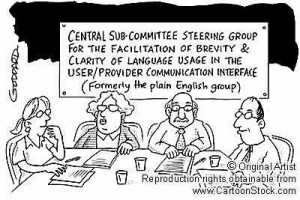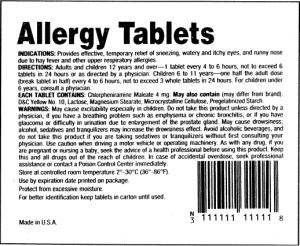Being technically inclined is a blessing and a curse; I’m able to troubleshoot my own issues with computers, but people sometimes ask for my help. It isn’t that the request for my help is a problem, but it irritates me to no end when I try to explain something in simple terms and it’s requested that I give directions “in English”. However, I understand the nature of the request. Plain language is vital when it comes to teaching a skill to people who lack fundamental knowledge about a specialized area within STEM.
A year or two ago, I was trying to teach my grandmother how to use a computer. I had to break everything down using simpler terms. She knew what I meant when I said she had to “click” an “icon”, but she didn’t know the names for things. She could grasp the concept of a “browser”, but she knew programs better as just that – programs. She knew each program was used for a different purpose, but she didn’t know them by name, as she doesn’t have much experience with computers. Plain language is especially helpful when explaining concepts marked by generational gaps (e.g. how to use a modern OS on a computer).
What I was saying earlier about being asked to use “English” when explaining how to troubleshoot an issue – that was something my aunt said to me when I visited her in Texas recently. I’ve realized time and time again that it is absolutely crucial to use plain language with people who possess a basic understanding of computers. As a Computer Science major surrounded by technically inclined people, it’s easy to forget. People lose interest in what you’re talking about and get frustrated when you don’t use plain language. In the context of the general public, it is especially important to use plain language when speaking about STEM concepts because it serves to inform people in terms they understand. Now, there’s also a time and place for more technical/advanced terminology, but that is only with people who have an intermediate or advanced understanding of the topic you speak about.
Using plain language to explain computer science concepts to a beginner is extremely different from using plain language to explain the same concepts to say, a database administrator. Plain language, while helpful to beginners, can serve to irritate advanced users and also slow down the process of learning/teaching. If you are aware that a person understands the more advanced concepts of what you’re speaking about, then it’s important that you use vocabulary effectively in order to explain things in a reasonably succinct fashion.
I strongly agree that the author is responsible for using appropriate language when speaking to their audience. Before you even begin to write a piece, it is your responsibility, as the author, to know who your intended audience is. If you’re speaking to people who work within the same field, use the language you’d normally use. However, if you’re speaking to beginners or if there’s any doubt about who will see what you’ve written, use plain language! The audience bears the responsibility of asking questions when instructions are unclear. Now, the author should write in a manner that enables the audience to understand what they’re talking about, but if uncommon/advanced terms or concepts are left undefined, then they might be doing more harm than help by leaving the audience in the dust, so to speak. The reader has the power to inform the author of the effectiveness of the piece. If there are any errors or if the piece lacks clarity, then the audience is able to inform the author and vicariously (through the author) ensure that future readers will be able to attain the understanding of the concepts that they seek to understand by reading the writer’s piece.
In conclusion:
- Plain language makes STEM subjects more appealing to beginners because it makes it easier to understand them.
- Plain language can work against a technical communicator because it can slow down communication between two people who are well-versed about the same subject.
- It is the author’s responsibility to know their audience and it is the audience’s responsibility to inform the author of any flaws in the writing.





